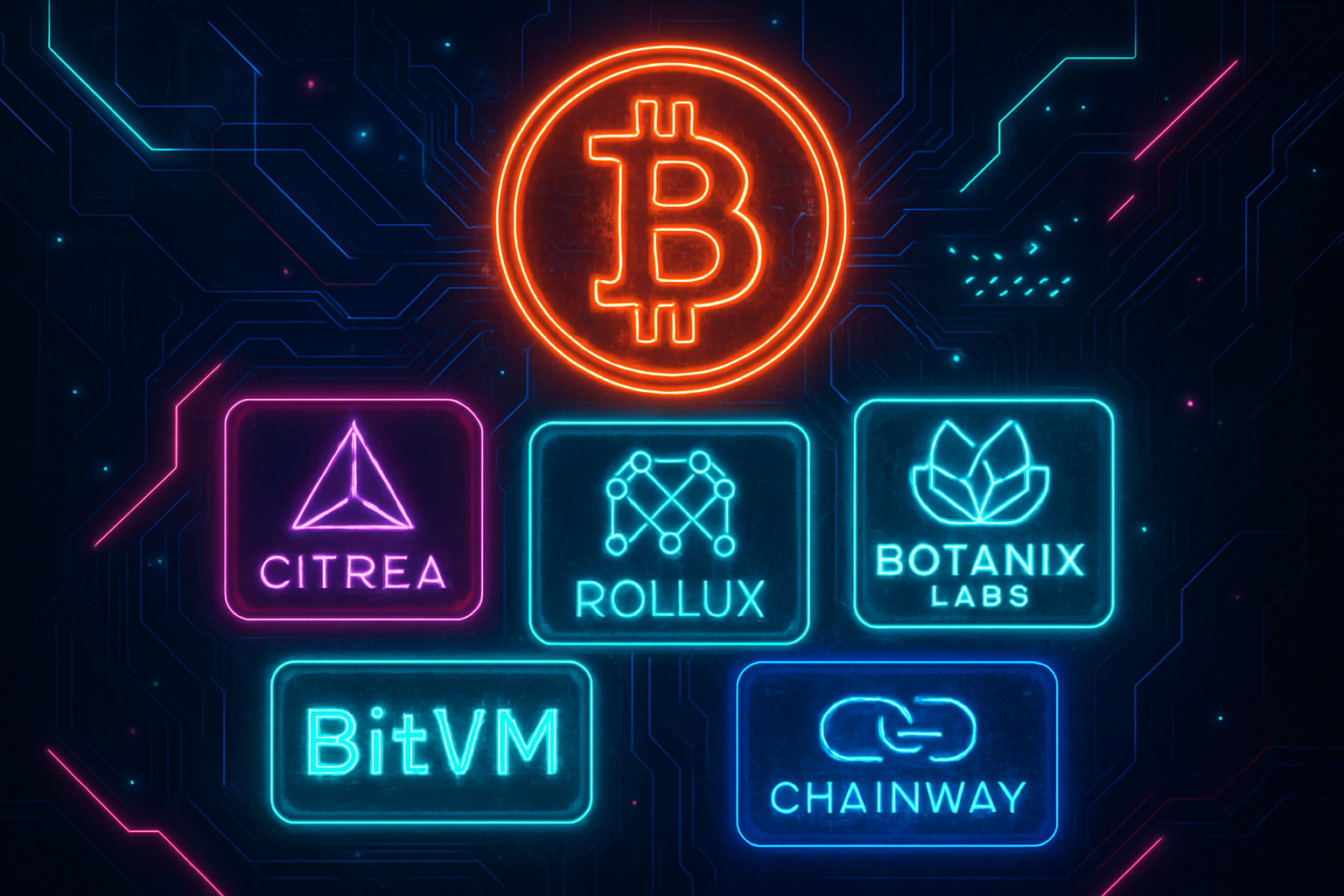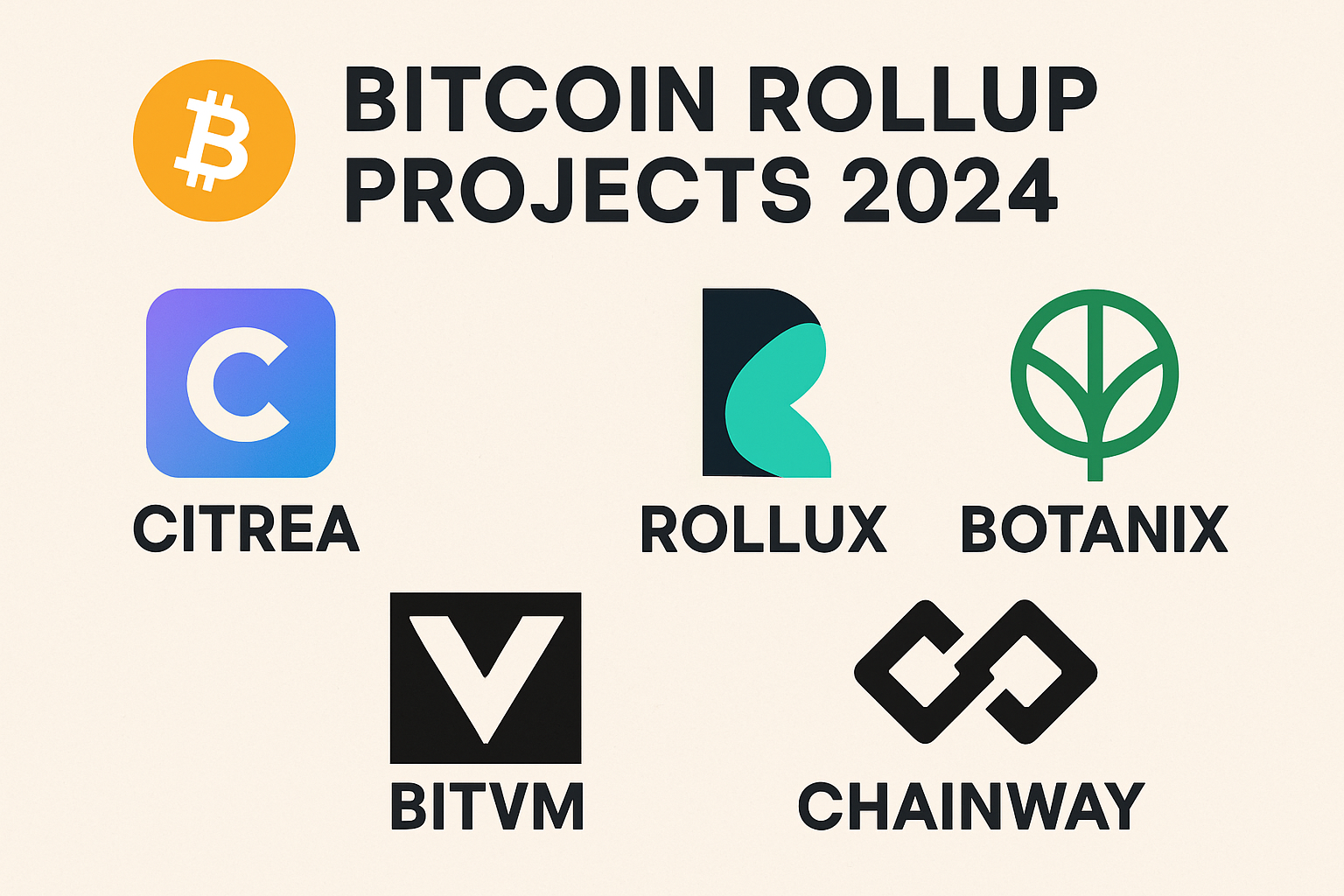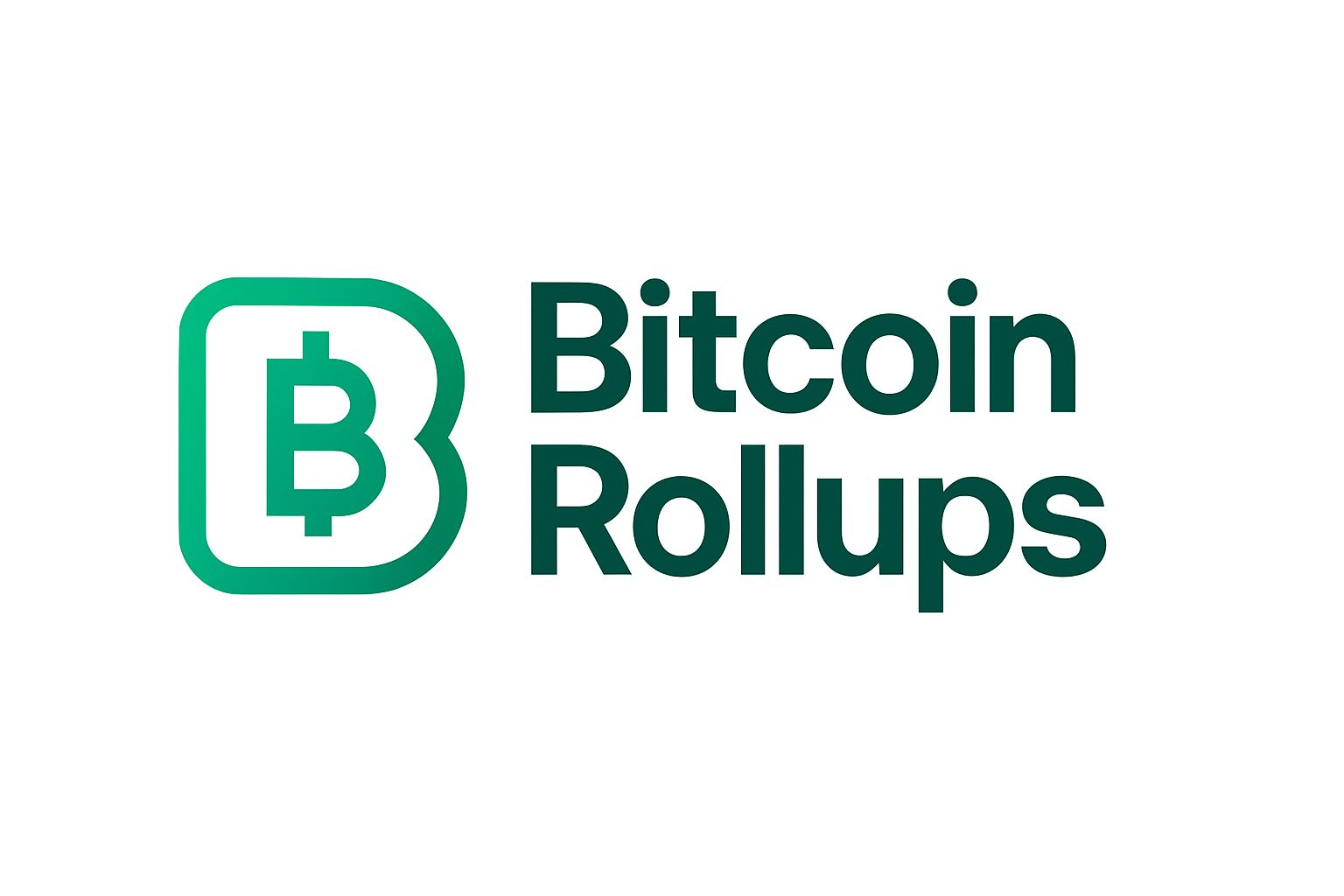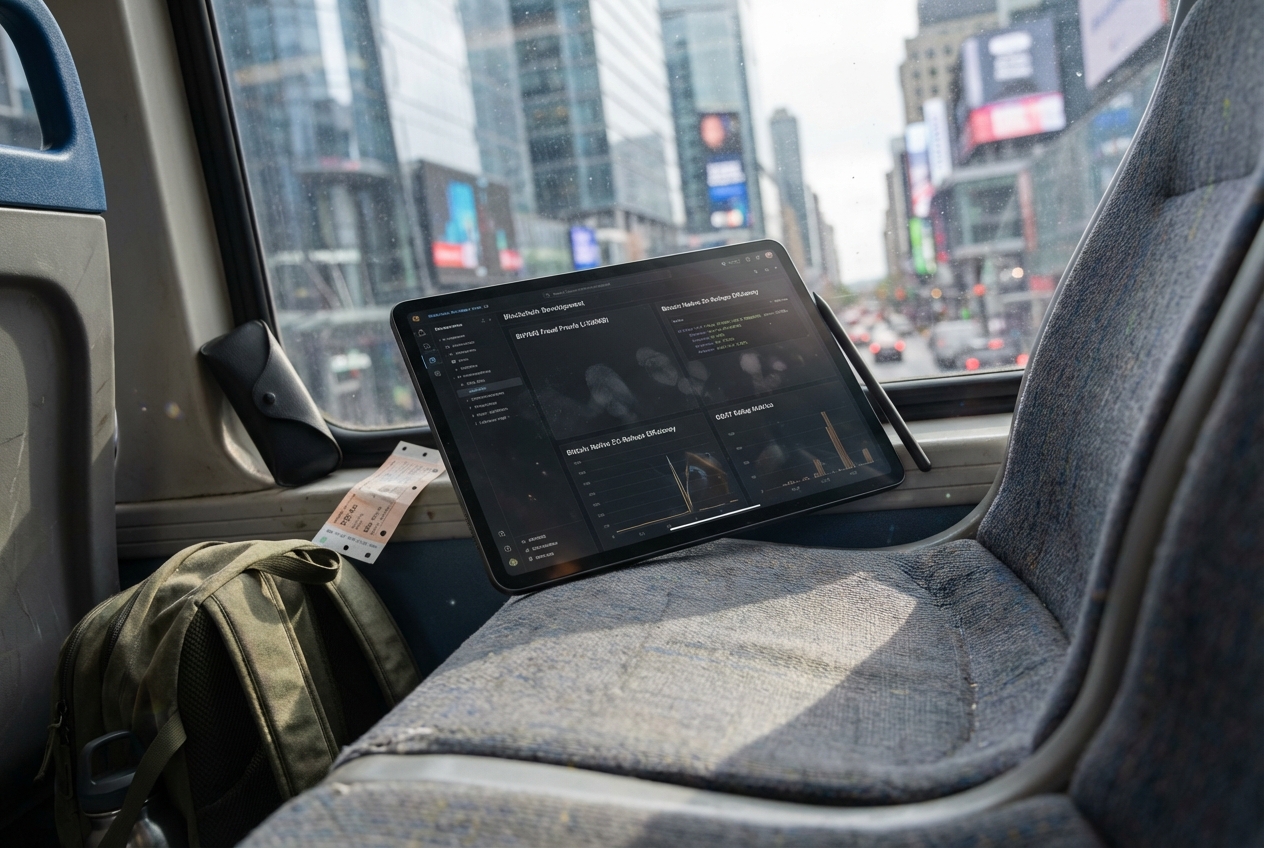
With Bitcoin trading at $115,792 as of September 19,2025, the conversation around Bitcoin scalability has never been more urgent. As transaction volumes and user demand surge, Layer 2 innovations like rollups are taking center stage. In 2024, several pioneering projects have emerged to bring zero-knowledge proofs and rollup technology to the Bitcoin ecosystem, promising not just faster and cheaper transactions but also unlocking entirely new classes of decentralized applications for Bitcoin holders.
Why Bitcoin Rollups Matter in 2024
The rollout of Ethereum ZK rollups over the past two years set a high bar for blockchain scalability. Now, similar breakthroughs are coming to Bitcoin. Unlike the Lightning Network, which excels at instant micropayments but is limited in programmability, rollup-based solutions aggregate and verify transactions off-chain before settling them securely on Bitcoin’s mainnet. This approach dramatically increases throughput while keeping fees low and maintaining trust-minimized security.
Let’s explore the top five Bitcoin rollup projects to watch in 2024, each pushing boundaries with distinct approaches to scaling and interoperability.
1. Citrea: The First ZK Rollup for Bitcoin
Citrea, developed by Chainway Labs, stands out as the first zero-knowledge (ZK) rollup purpose-built for scaling Bitcoin. Leveraging advanced cryptography, Citrea aggregates transactions off-chain but anchors their validity on the Bitcoin mainnet using succinct ZK proofs. This architecture enables developers to build Ethereum-style decentralized applications (dApps) while inheriting Bitcoin’s security guarantees.
A key innovation is Citrea’s use of the Bitcoin Virtual Machine (BitVM), which acts as a bridge between mainnet and Layer 2 environments. In June 2024, Citrea launched its public devnet, an open invitation for developers to experiment with smart contracts on Bitcoin without sacrificing decentralization or security. With $2.7 million raised in early funding and growing ecosystem traction, Citrea is a project every builder should watch closely.
2. Rollux (Syscoin): EVM Power Meets Bitcoin Security
Rollux, built atop Syscoin’s hybrid chain architecture, delivers an EVM-compatible Layer 2 solution anchored by Bitcoin-level security through merged mining. By integrating optimistic rollups with future plans for ZK-rollups, Rollux enables seamless deployment of Ethereum dApps while leveraging Syscoin’s dual-layer consensus mechanism.
This hybrid design appeals both to developers seeking familiar Solidity environments and users demanding robust settlement finality backed by the world’s most secure blockchain, Bitcoin itself. As adoption grows among DeFi protocols and NFT platforms looking for scalable alternatives beyond Ethereum mainnet congestion, Rollux is positioning itself as a gateway for next-gen applications secured by both Syscoin and Bitcoin.
3. Botanix Labs: Spiderchain and Decentralized Governance
Botanix Labs made headlines in July 2025 with its mainnet launch featuring Spiderchain technology, a novel approach that combines EVM compatibility with native BTC settlement on Layer 2. Botanix employs decentralized governance mechanisms powered by its own validator network and leverages zero-knowledge proofs for transaction verification.
The result? Users can deploy Ethereum dApps that settle directly onto the Bitcoin blockchain without trusting centralized intermediaries or custodians. With $11.5 million raised from leading crypto VCs such as Polychain Capital and UTXO Management, and a focus on open-source development, Botanix is quickly becoming a hub for builders who want both programmability and uncompromising security.
Bitcoin (BTC) Price Prediction Table: 2026–2031
Comprehensive BTC price outlook considering Bitcoin rollup adoption, market trends, and evolving crypto landscape as of September 2025.
| Year | Minimum Price | Average Price | Maximum Price | YoY % Change (Avg) | Market Scenario Insights |
|---|---|---|---|---|---|
| 2026 | $98,000 | $130,000 | $175,000 | +12.3% | Rollup adoption grows, but market correction risk after 2025 rally |
| 2027 | $120,000 | $155,000 | $210,000 | +19.2% | Layer 2 and BTC DeFi expansion boost confidence; regulatory uncertainty tempers upside |
| 2028 | $135,000 | $180,000 | $260,000 | +16.1% | Institutional adoption and global payment use cases accelerate |
| 2029 | $150,000 | $210,000 | $315,000 | +16.7% | Next halving cycle, strong macro tailwinds, but tech competition intensifies |
| 2030 | $170,000 | $240,000 | $385,000 | +14.3% | Mainstream financial integration, possible new ATHs if tech scaling succeeds |
| 2031 | $195,000 | $275,000 | $450,000 | +14.6% | Matured rollup ecosystem, BTC as global settlement layer; volatility persists |
Price Prediction Summary
Bitcoin’s price outlook for 2026–2031 remains broadly bullish, driven by the maturation of Bitcoin rollup technologies, expanding use cases (DeFi, staking, smart contracts), and increased institutional involvement. While minimum prices reflect possible bear market corrections or macro shocks, average and maximum scenarios reflect strong growth potential if scalability solutions are widely adopted and regulatory clarity improves. Investors should expect significant volatility, especially around halving cycles and major regulatory events.
Key Factors Affecting Bitcoin Price
- Adoption and success of Bitcoin-native rollup projects (e.g., Citrea, Botanix, Merlin)
- Regulatory developments in major economies (US, EU, Asia)
- Global macroeconomic conditions and monetary policy
- Competition from other Layer 1s and Layer 2s (Ethereum, Solana, etc.)
- Continued institutional investment and integration with traditional finance
- Security and technical robustness of new scaling solutions
- Bitcoin halving cycles and supply issuance reductions
Disclaimer: Cryptocurrency price predictions are speculative and based on current market analysis.
Actual prices may vary significantly due to market volatility, regulatory changes, and other factors.
Always do your own research before making investment decisions.
The Road Ahead: Next-Gen Scaling and zkBTC Applications
This new wave of Bitcoin layer 2 innovations, from Citrea’s ZK-rollups to Botanix’s Spiderchain architecture, signals that real-world DeFi utility is finally arriving on top of BTC, not just wrapped tokens or synthetic assets but true composability secured by the original blockchain itself.
But the innovation doesn’t stop there. Two additional projects provides BitVM (ZeroSync) and Chainway: are redefining what’s possible for Bitcoin’s scalability, trustless computation, and interoperability.
4. BitVM (ZeroSync): Trustless Computation on Bitcoin
BitVM, championed by ZeroSync, introduces a paradigm shift in how computation can be performed and verified on Bitcoin without changing its base protocol. BitVM leverages zero-knowledge proofs to enable arbitrary off-chain computations that can be verified on-chain, opening the door to complex smart contracts and dApps natively secured by Bitcoin’s consensus.
The ZeroSync team is pioneering stateless client technology that allows nodes to sync with the Bitcoin blockchain using succinct ZK proofs instead of downloading every block. This not only reduces resource requirements but also makes it feasible for mobile devices and light clients to participate securely in the network. The implications for decentralization and accessibility are profound, imagine verifying your BTC balance or transaction history instantly, anywhere in the world.
5. Chainway: Bridging Data Integrity with ZK Proofs
Chainway is best known as the team behind Citrea, but their broader mission extends into building zero-knowledge infrastructure for Bitcoin’s future. Alongside Citrea’s rollup, Chainway is developing tools that bring verifiable data availability and privacy-preserving proofs to both developers and enterprises looking to leverage Bitcoin as a global settlement layer.
Chainway’s approach ensures that data processed off-chain can always be proven valid and consistent with mainnet state, crucial for scaling use cases like decentralized identity, supply chain tracking, or cross-chain bridges where trust minimization is paramount. Their ongoing research into recursive ZK proofs and modular rollup frameworks could set new standards for secure interoperability across blockchains.

What Sets These Projects Apart?
The 2024 landscape of Bitcoin rollup projects is defined by three pillars: security, programmability, and composability. Each project in this list brings something unique:
- Citrea: First-mover advantage in ZK rollups for Bitcoin; seamless Ethereum compatibility via BitVM.
- Rollux (Syscoin): EVM support anchored by merged-mined security; hybrid approach blending optimistic and ZK rollups.
- Botanix Labs: Spiderchain governance model; native BTC settlement with full EVM programmability.
- BitVM (ZeroSync): Stateless syncing; generalized computation on Bitcoin secured by zero-knowledge proofs.
- Chainway: End-to-end ZK infrastructure; focus on data integrity, privacy, and modularity for future-proof scaling.
Adoption Outlook: What to Watch Next?
The next year will be pivotal as these platforms move from testnets to mainnet deployments, attract developer ecosystems, and prove their security models under real-world conditions. With Bitcoin at $115,792, there’s significant capital, and curiosity, flowing into Layer 2 solutions that promise both scalability and uncompromising trustlessness.
If you’re a developer or investor looking at the future of BTC beyond simple payments or wrapped assets, now is the time to experiment with these networks or follow their progress closely. Stay engaged with community updates from Citrea’s devnet launches to Botanix’s validator onboarding rounds, these milestones will shape how billions in value move across Bitcoin in the years ahead.
The rapid evolution of zero-knowledge technology means that what seems experimental today could become industry standard tomorrow. Whether you’re excited about zkBTC DeFi protocols or just want faster transactions with lower fees on your favorite blockchain, these five projects are leading the charge toward a more scalable, and programmable, Bitcoin network in 2024 and beyond.







